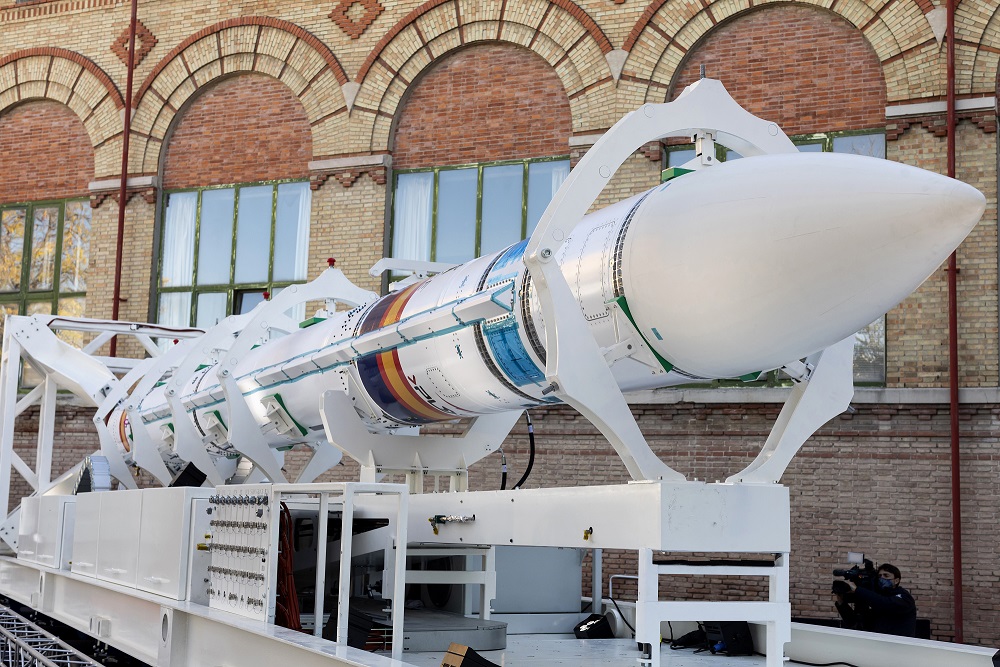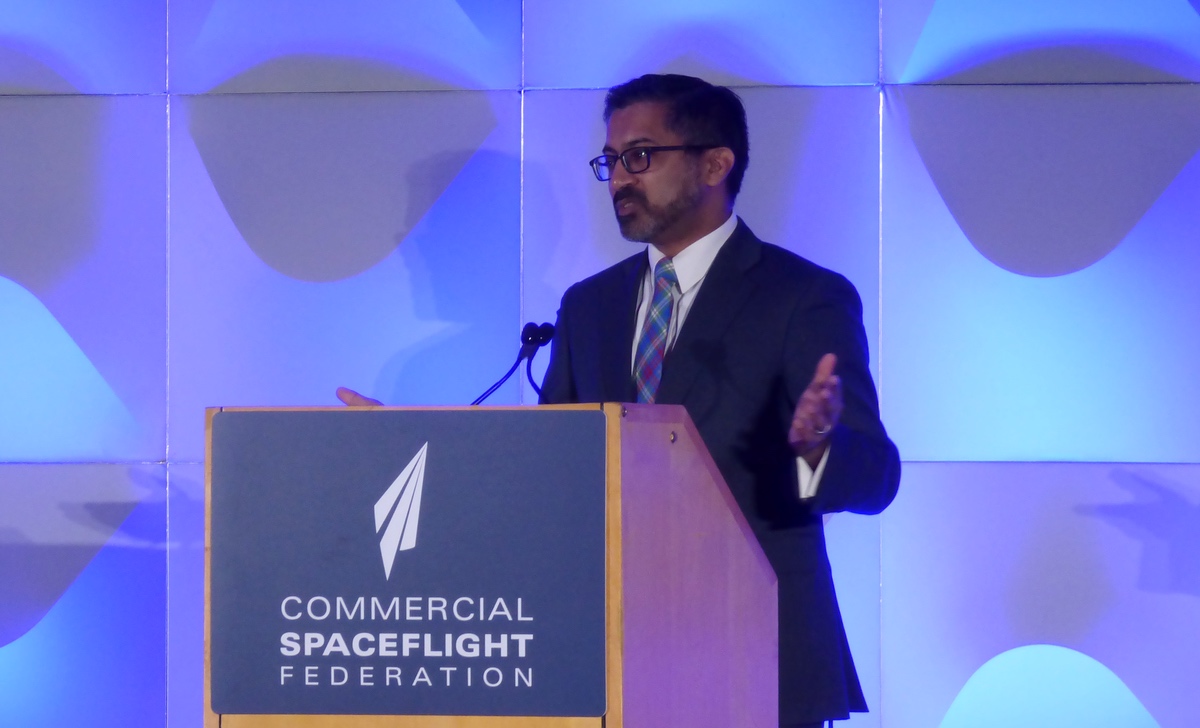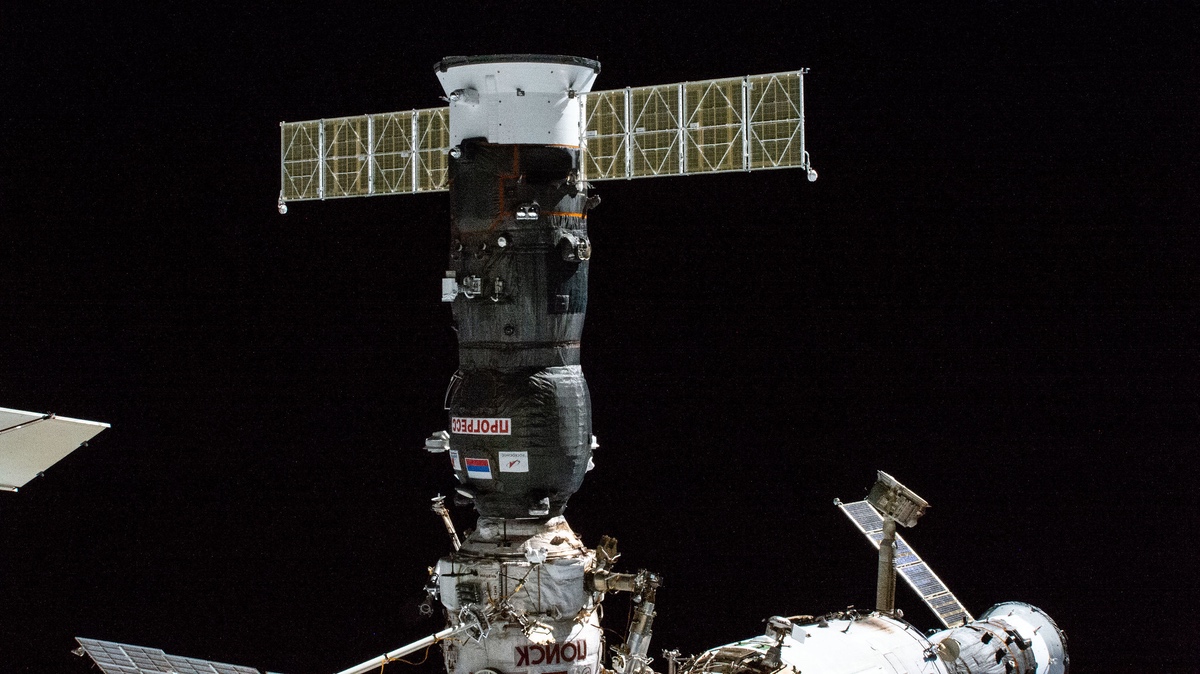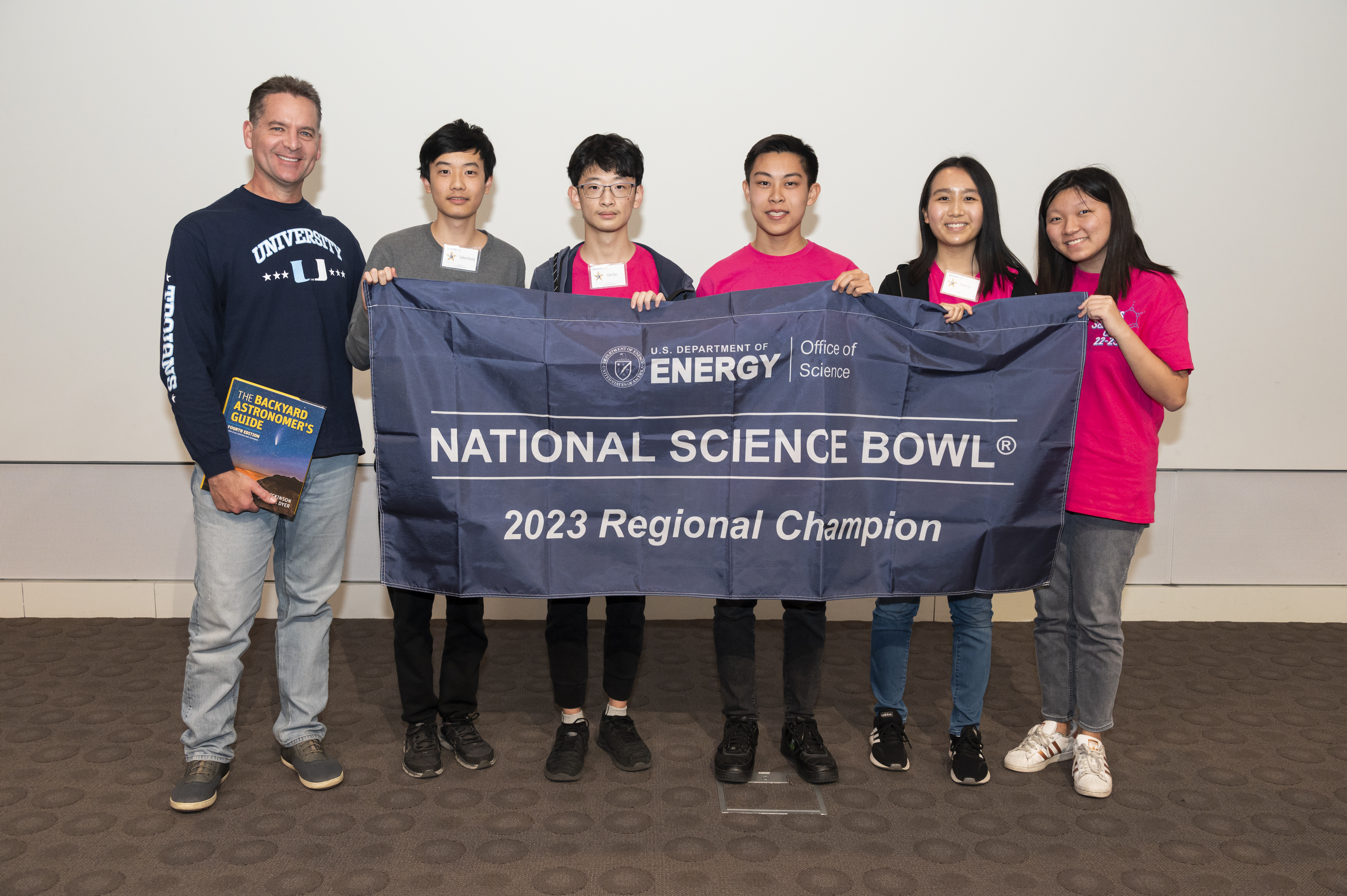Launch demand remains high despite industry struggles
Original Publication Date: 2023-02-12 14:13

SmallSat Symposium panel: New launch vehicles needed to meet growing demand. "We have more demand than we have supply," Says Saturn Satellite Networks CEO. "We need diversity, just like any market, to thrive," Says Integrate Space's John Conafay.
White House reviewing input on mission authorization concepts
Original Publication Date: 2023-02-12 00:42

The National Space Council is working on a proposed framework for commercial space activities. Such authorization is required under Article 6 of the Outer Space Treaty. The council is reviewing feedback from the private sector in a series of “listening sessions” The first meeting of the council’s reconstituted Users’ Advisory Group is scheduled for Feb. 23.
Progress cargo spacecraft at ISS suffers coolant leak
Original Publication Date: 2023-02-11 17:40

The coolant leak occurred shortly after another cargo spacecraft docked with the station. NASA confirmed the problem was with the coolant system on the Progress spacecraft. This incident took place nearly two months after the Soyuz MS-22 spacecraft suffered a coolant leak. The leak led Roscosmos to launch the next Soyuz spacecraft to the station without a crew.
Russian cargo ship docks as second Progress suffers sudden loss of coolant – Spaceflight Now
Original Publication Date: 2023-02-11 00:00
The Progress MS-21/82S spacecraft suffered a sudden loss of coolant. A micrometeoroid punctured a coolant line on the Soyuz MS-22/68S crew ferry ship in December. A new Progress, meanwhile, was launched from the Baikonur Cosmodrome in Kazakhstan.
NASASpaceFlight.com
India's new SSLV rocket has successfully reached orbit on its second attempt. Friday’s launch carried a trio of satellites, lifting off at 9:18 AM local time (03:48 UTC) from the Satish Dhawan Space Centre. The rocket's maiden flight ended in failure six months ago.
Commercial Archives
The first of two Starlink launches in close succession, Starlink Group 5-4 lifted off on Sunday. The second mission of the week, Starlink Group 2-5, is slated to launch at 8:32 AM PST (16:32 UTC) on Wednesday.
International Archives
Roscosmos’ latest Progress resupply craft has docked at the International Space Station (ISS) After the successful docking, Roscosmos engineers detected a depressurization in the coolant loop of the Progress MS-21 spacecraft. This is the same system that leaked on the Soyuz MS-22 spacecraft in December. NASA confirmed that the crew of the ISS is in no danger and that the cause of the leak is under investigation.
ISS Updates – Spaceflight101 – International Space Station

A veteran NASA spacewalker and an EVA rookie from Japan ended their week with nearly six hours of work outside the International Space Station. The restoration of the Station’s Mobile Servicing System started last year and continued in January to provide Canadarm2 with a new pair of grappling hands.
Featured – Spaceflight101

SpaceX Falcon 9 takes to the skies over Florida’s Cape Canaveral Monday afternoon. The flight-proven Dragon spacecraft will deliver science gear, supplies and maintenance hardware to the International Space Station. It is the first of at least six cargo ships inbound to the U.S. Segment of ISS this year.
News – Spaceflight101

Russia's Rockot booster set to blast off from the Plesetsk Cosmodrome at 17:57 UTC with the Sentinel-3B multi-function satellite. Europe's Copernicus satellite fleet is gearing up for the arrival of its next addition on Wednesday with a Russian Rockot booster.
Re-Entry: Long March 11 Rocket Body – Spaceflight101

The CZ-11 fourth stage used leftover propellant for a partial de-orbit maneuver, lowering its perigee to 120 Kilometers to significantly accelerate its orbital decay. It is reportedly built around a YF-50 main engine and in a nominal mission conducts the orbital circularization after the three CZ-11 stages.
NASA’s NuSTAR Telescope Reveals Hidden Light Shows on the Sun

NuSTAR’s relatively small field of view means it can’t see the entire Sun from its position in Earth orbit. The observatory’s view of the Sun is actually a mosaic of 25 images, taken in June 2022. The high-energy X-rays observed by NuSTAR appear at only a few locations in the Sun’s atmosphere. By contrast, Hinode’s XRT detects low-energy X-ray, and SDO’s AIA detects ultraviolet light.
NASA’s Curiosity Finds Surprise Clues to Mars’ Watery Past

Gediz Vallis is thought to have been eroded by a small river. Scientists suspect wet landslides also occurred here, sending car-size boulders and debris to the bottom of the valley. Curiosity got a glimpse of this debris at Gediz Vallis Ridge twice last year but could only survey it from a distance.
Webb Detects Extremely Small Main Belt Asteroid

The James Webb Space Telescope has detected an asteroid in the main belt of the solar system. The asteroid is the smallest observed to date by Webb and one of the smallest detected in the main belt. Future dedicated Webb observations will allow astronomers to study asteroids smaller than 1 kilometer in size. The result suggests that Webb will also be able to serendipitously contribute to the detection of new asteroids.
University High Reclaims Victory at JPL-Hosted Science Bowl
University High School from Irvine, California won the National Science Bowl. The school had won the competition for four years in a row until last year's loss. Team captain Benjamin Fan revealed the secret to their success. He said they practiced with a buzzer like the one competitors use to signal they’re ready to answer.
NASA-ISRO Earth Science Instruments Get Send-Off Before Moving to India

Somanath, Indian Ambassador and Deputy Chief of Mission Sripriya Ranganathan, and NASA officials toured the High Bay 2 clean room. They saw engineers and technicians putting the science instrument payload through final electrical testing. Also present were Bhavya Lal, NASA’s associate administrator for technology, policy, and strategy; Karen St. Germain, director of NASA’s Earth Science Division.
Scientists Track Tropical Landslide Creeping Below an African City

Researchers studied week-to-week landslide motion over the past 4 1/2 years. They found that rainfall, tectonic activity, and urban development all played roles in landslide behavior. But the most important factor was water runoff. Water weakens rock by infiltrating its pores. In urban settings, infrastructure can drastically alter water flow.
NASA Scientists & Historian Named AAAS 2022 Fellows

Four individuals with NASA affiliations have been named 2022 fellows by the American Association for the Advancement of Science. The 2022 Fellows class includes 508 scientists, engineers, and innovators spanning 24 scientific disciplines. Rita Sambruna from NASA’s Goddard Space Flight Center in Greenbelt, Maryland, was recognized in the AAAS Section on Astronomy. Erik Conway of NASA’s Jet Propulsion Laboratory in Southern California was honored for distinguished contributions and public outreach to the history of science.

